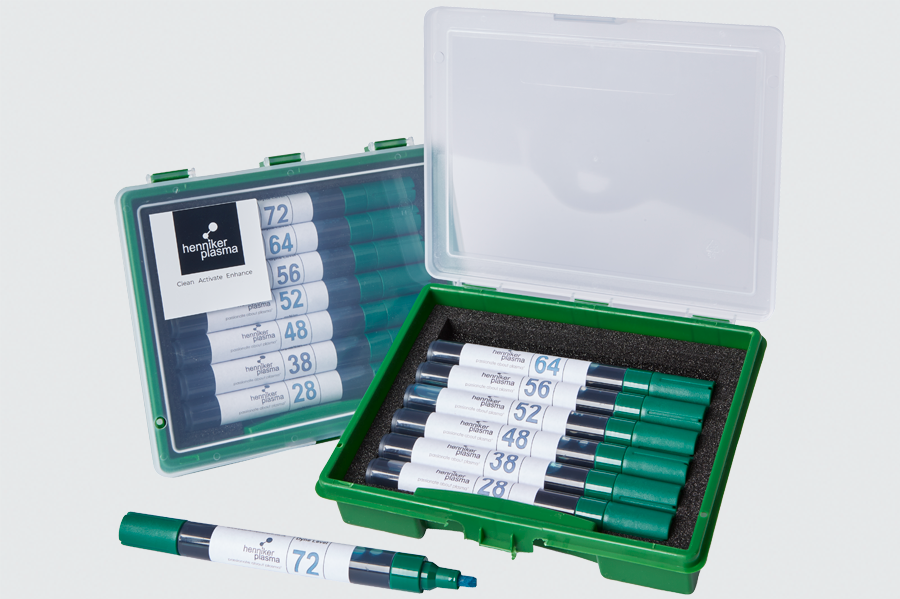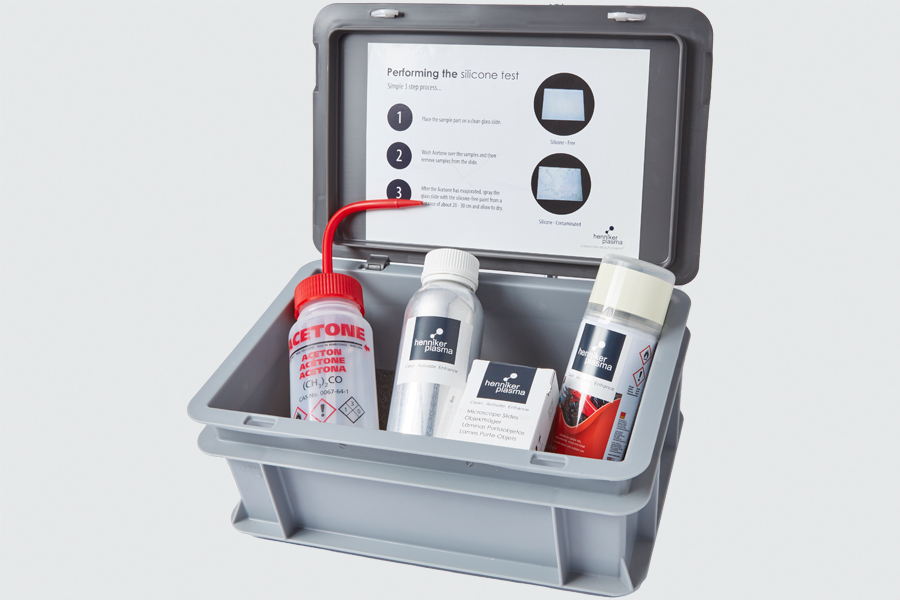Dyne pens from Henniker Plasma enable users to rapidly determine if the surface energy of a test part has been plasma treated using surface energy analysis.
Surface energy is the property of a surface emerging from unbalanced molecular forces at or near the surface, compared to those in heavy material. It offers a rapid indication of wettability and adhesion characteristics.
Dyne Pens and How They Work
If a liquid is applied to the surface and its surface energy is more significant compared to the surface energy of a material to which it is employed, then the liquid tends to develop droplets. If the liquid's surface energy is lower than that of the surface to which it is employed, it will spread out or “wet” the surface evenly.
Dyne Pens Sets

Image Credit: Henniker Plasma
Henniker supplies sets of Dyne test pens, which come with graduated surface tension levels. The Dyne pen is employed for the surface under study and a simple visual observation of wettability is made. Utilizing Dyne pens of increasing surface tension offers quick identification of the approximate level of the surface energy of the sample.
Surface energy is typically quantified in energy units known as dynes/cm or mN/m. The Surface Energy Test Pens Set contains individual pens spanning the range 34 mN/m to 72 mN/m in 2 mN/m increments.
Quick-Test Pens
The Quick-Test pens are utilized as a rapid quality test of whether a part has been plasma treated. They are refillable and available with a single “setting” of 38 mN/m.

All Dyne Pens and Pen Sets are available off the shelf for next day delivery. Image Credit: Henniker Plasma
Surface Energy Test Inks

Image Credit: Henniker Plasma
Surface Energy Test Inks offer a precise measurement of surface energy. Surface energy is the property of a surface emerging from unbalanced molecular forces at or next to the surface, then to those in the bulk material.
How surface energy test inks work
If a liquid is applied to the surface and its surface energy is greater compared to the material’s surface energy to which it is applied, then the liquid tends to develop droplets. If the liquid’s surface energy is lower, it will spread out or “wet” the surface evenly.
Surface Energy Testing
By brushing surface energy test inks of increasing surface tension over a plasma-treated surface users can precisely determine the surface energy of the material, which, in turn, provides insight into its wettability and bonding characteristics relative to an untreated surface.
Surface energy is quantified in energy units known as dynes/cm or mN/m. Individual surface energy test inks are employed in 12 ml bottles of altering surface tension from 12mN/m to 105mN/m, or as handy kits with fluids that have a choice of surface tension levels; 28 mN/m, 38, 48, 56, 64, 72, and 105 mN/m.
Surface Silicone Contamination Test Kit

Image Credit: Henniker Plasma
In several manufacturing steps, silicone contamination of surfaces poses a real issue. Due to mold release agents or leeching from “clean” packaging, silicones could be present, leading to poor adhesion and bonding characteristics.
The surface silicone contamination test kit is a comfortable technique to identify the existence of silicones. Supplied in a handy case, the kit consists of everything required to execute a simple test for surface contamination by silicones.
The test kit contains:
- Wash solvent
- Over-spray
- Padded carry case
- Mineral glass slides